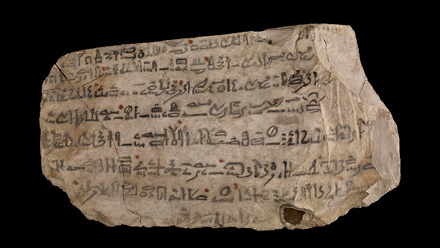Recordings will be made available for those unable to attend the live sessions!
This course offers an in-depth exploration of ancient Egyptian funerary texts, architecture, and burial assemblages from the Old Kingdom (c. 2600 BCE) to the end of the New Kingdom (c. 1070 BCE). Through a multidisciplinary lens—including history, archaeology, and art history—participants will examine how the ancient Egyptians envisioned the afterlife and how these beliefs evolved over time.
Focusing on the major funerary text corpora—such as the Pyramid Texts, Coffin Texts, and the Book of the Dead—the course highlights the close relationship between texts, the objects they were written on, and the archaeological contexts in which they were found. Participants will discover how the placement of spells on specific items like coffins and shabtis reveals deeper symbolic meanings, and how the layout of tombs mirrored the imagined landscape of the underworld.
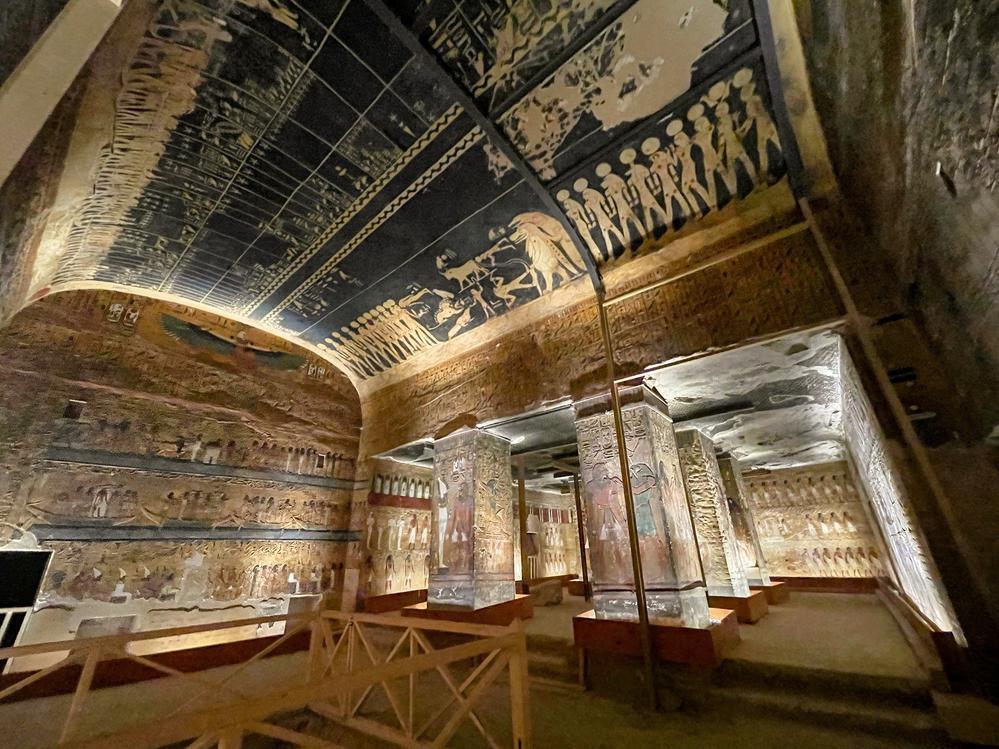
Depiction of Afterlife Books on the walls of Seti I’s burial chamber in the Valley of the Kings.
By attending this course, participants will gain not only a strong understanding of ancient Egyptian burial customs, but a deeper understanding of how the ancient Egyptians envisioned death and immortality, and how they conceptualised the afterlife. They will also be guided through the complex religious ideas embedded in the various funerary text corpora and their development over time. Short exercises and engaging materials will support and enrich the learning experience.

The course is open to everyone, whether they are beginners about ancient Egypt or life-long enthusiasts. Background into ancient Egyptian religious concepts and the use of funerary material culture is provided, as are accompanying materials, making the participation more engaging and allowing the participants to retrace and map the content discussed in the course for themselves.
Tutor
Course Outline
Please note that main content will be delivered between 18:00-19:30, though some optional participation (quizzes, Q&A, etc.) may continue beyond that time.
Thursday 13 November 2025, 18:00-19:30 (UK time)
Week One - Introduction: Religious Concepts and Funerary Assemblages
The first session introduces participants to the major deities and core religious concepts of ancient Egypt, laying the groundwork for understanding the civilization’s complex beliefs surrounding death and the afterlife. The class also offers an overview of the wide range of objects found in funerary assemblages, highlighting their symbolic meaning—especially their role as carriers of funerary spells, a theme that will recur throughout the course. Additionally, participants will receive a brief introduction into ancient Egyptian magic, a vital element intertwined with religion and ritual practice. The session concludes with a Q&A segment, providing an opportunity for participants to ask questions and engage with the material before we explore these topics in greater depth in the classes to come.
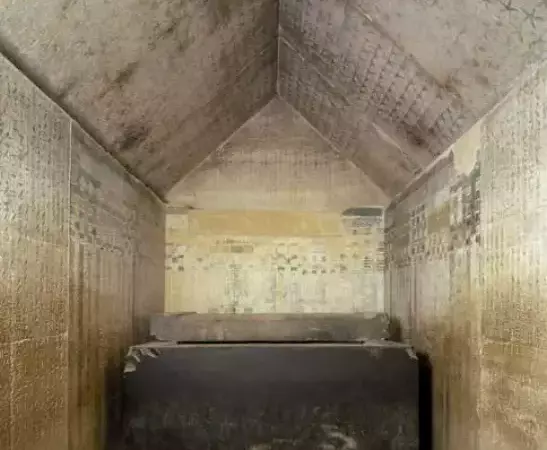
Burial Chamber in the Pyramid of Unas, Saqqara, with Pyramid Text spells.
Thursday 20 November 2025, 18:00-19:30 (UK time)
Week Two - The Ascend to Heaven: The Pyramid Texts
The second session offers a brief introduction to the genre of funerary texts and their key characteristics. The primary focus is on the Pyramid Texts—the oldest known corpus of funerary literature in ancient Egypt. Participants will explore how these texts reflect some of the earliest conceptions of the afterlife’s geography and structure. We will examine the various text genres contained within this text corpus and discuss how the spells were arranged in the tombs, revealing both ritual purpose and symbolic meaning. The session concludes with a closer look at one of the most enigmatic and debated compositions in the Pyramid Texts: the so-called “Cannibal Hymn”.
Thursday 27 November 2025, 18:00-19:30 (UK time)
Week Three - The Coffin as Transformation Machine: The Coffin Texts
In this session, participants will be introduced to the Coffin Texts, a funerary text corpus often associated with the so-called ‘democratisation’ of the afterlife. While the Pyramid Texts were reserved for royalty at first, the Coffin Texts appeared on the coffins of elite non-royals, raising the question of whether access to the afterlife was truly restricted first and later became more widespread. This idea will be explored and critically examined during the class. The belief system reflected in the Coffin Texts will be discussed in detail, along with their purpose and structure. Particular emphasis will be placed on evolving ideas about the geography and cosmology of the afterlife—now depicted visually for the first time. The key spells 335 and 1130 will be analysed to highlight essential religious concepts, such as the speech by the creator god. The session concludes with a reflection on the relationship between the spells and the coffins on which they were inscribed, shedding light on the function of coffins as active agents in securing a successful afterlife.
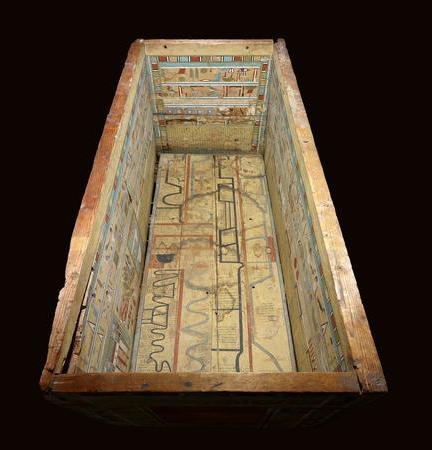
Depiction of the Book of Two Ways, part of the Coffin Texts, on the coffin of Sen (EA30841; ©The Trustees of the British Museum).
Thursday 4 December 2025, 18:00-19:30 (UK time)
Week Four - Moving freely in the Afterlife: The Book of the Dead
The Book of the Dead is perhaps the most famous corpus of funerary texts from ancient Egypt. While best known in the form of papyrus scrolls containing a selection of spells, individual utterances from the Book of the Dead also appear on a variety of burial objects. This session focuses on the relationship between specific spells and the objects they are inscribed on—highlighting how the material context enhances the spells’ meaning and function. Participants will also explore the diverse themes covered in the spells, such as protection, transformation, and judgment, as well as the historical development of the Book of the Dead and how it was produced. Through this exploration, the session reveals how the Book of the Dead served as a personalised and dynamic guide to the afterlife.
Thursday 11 December 2025, 18:00-19:30 (UK time)
Week Five - The Journey through the 12 hours of the Night: The New Kingdom Afterlife Books
The New Kingdom saw the emergence of a new group of funerary texts known collectively as the Afterlife Books. These complex compositions depict the nocturnal journey of the sun god through the twelve hours of the night—through the underworld and into the sky—symbolizing renewal, transformation, and cosmic order. This session offers an introductory overview of these texts, which were inscribed primarily in royal tombs of the period and later echoed in other contexts and materials. Special attention will be given to tomb of Seti I, whose richly decorated walls serve as a vivid example of how these texts were used in combination—and in conjunction with the tomb’s architectural layout—to shape a royal vision of the afterlife. The focus will be on the Amduat, the earliest and most influential of these texts. By tracing its origins, we will explore how new theological ideas were seamlessly woven into established religious traditions, offering insights into the dynamic evolution of ancient Egyptian beliefs about the afterlife.
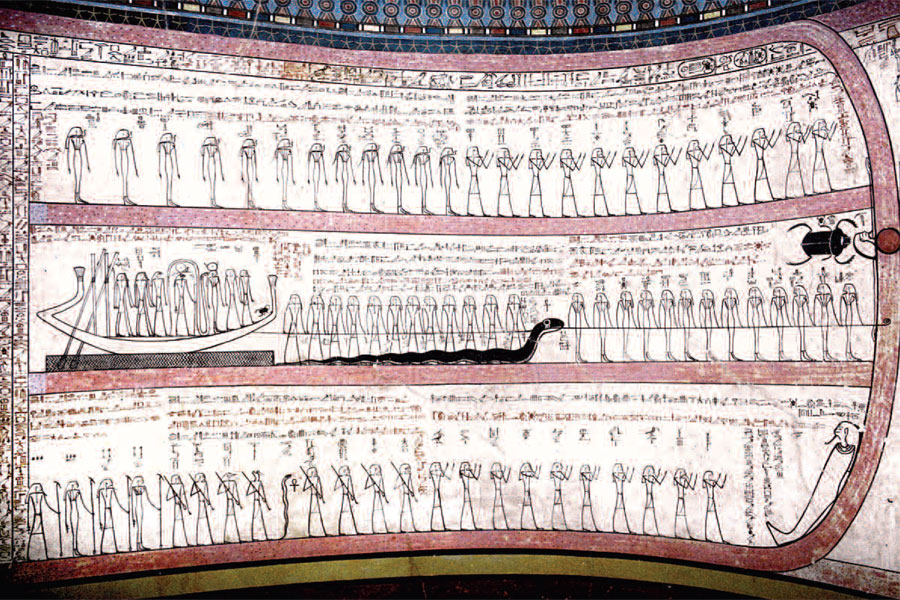
Depiction of the Afterlife Book Amduat on the walls of king Thutmose III’s burial chamber in the Valley of the Kings.
Booking and information
Register for your place in advance using the link below. Here, you can select to pay for optional add-ons. You can buy a personalised certificate for £5.99, featuring your name, the event name and start date, which will be signed by the EES Engagement Manager to confirm your attendance at this online course.
After registering, you will receive a confirmation email containing information about your booking. If you do not receive your email, then please check your junk folders before contacting the Egypt Exploration Society. The course will be held on our Zoom platform and attendees will be able to interact by asking questions, using the chat and polls. It is not necessary to have a working webcam or microphone for this course. The online course will be complemented by Google Drive, where resources will be uploaded.
Recordings will be made available for those unable to attend the live sessions! These recordings will be available via a YouTube playlist for approximately one month after the final class.
Please ensure that you have read our guide to attending EES events before the course begins.
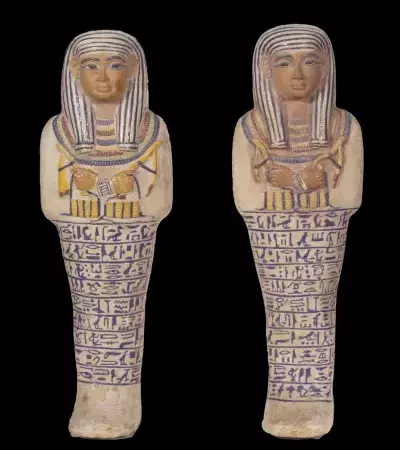
Shabti of Sati with Book of the Dead Spell 6 (Brooklyn Museum 37.123E).


